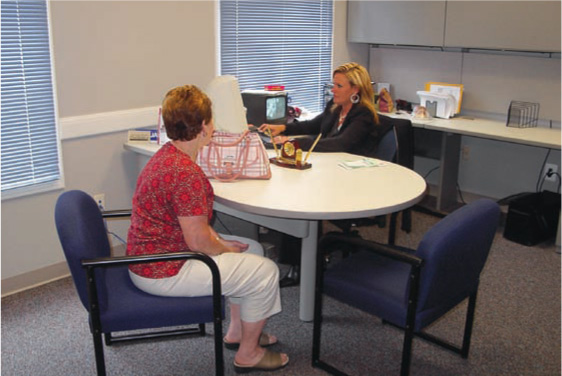Some credit unions are betting they can succeed where banks have failed.
Research firm SNL Financial reported banks and thrifts shut 2,267 branches in 2012. AlixPartners Consultants said it figures those closings pared the nation's bank branch list to some 93,000 locations. What's more, the firm said it expects the count to continue falling to 90,000 over the next decade, which would put it back to 2000 levels.
But people in small towns like Alburgh, Vt., are much more focused on the local picture. When People's United Bank closed its branch in the small community of about 2,000 people in April 2012, it left the border town with no brick and mortar bank presence.
Then North Country Credit Union, a $230 million institution headquartered in South Burlington, moved in.
“We had a branching strategy that did not include going to Alburgh,” said Robert Cowie, vice president of operations. “But we were part of the solicitation by the community group. What resonated mostly with us was that there was not a financial institution branch within about 15 miles. Any community looking to remain economically viable or to improve the general financial status needed an institution in town.”
“Once we realized nobody else was willing to step up, we did,” Cowie continued. “We approached People's United to buy their building. They originally said they wouldn't sell it to another financial institution, but pressure from the community caused them to change their mind. We bought the building but we did not buy deposits, we did not buy loans.”
North Country put a fresh coat of paint on the office and hired almost the entire staff that had worked for the bank.
Cowie chuckled as he explained the resulting employee culture shock.
“They moved from an environment that was attempting to maximize earnings to one that focused on giving back and was a bit more generous than they were used to,” he said.
Additionaly, the bank had only extended credit to A and B borrowers, while the credit union took more credit risks.
Cowie said the community has very much embraced the credit union, and the move created good will throughout Vermont.
But does the branch make sense from a hardnosed business sense? Can the credit union branch survive where the bank failed?
“I don't know what the bank's minimum profitability thresholds were,” Cowie said. “We had a profitability analysis, and our goal was to break even within the first two years. We have far exceeded that.”
The challenge, he added, is to book enough viable member business loans. Many applications come from entrepreneurs lacking sufficient reserves or capital to meet North Country standards. Mortgages and other consumer lending activity have fallen into place.
Next Page: In Rhode Island
Another example of a credit union succeeding where banks bailed out occurred in Pascoag, R.I. Last year a Bank of America branch closed there, leaving Rhode Island Credit Union as the town's only financial institution. RICU, with $246 million in assets, is headquartered in Providence.
Gina DePalo, vice president of branch administration and marketing at RICU, noted the credit union has maintained a profitable full-service branch in Pascoag for more than 33 years.
“It's always been a successful location for us,” DePalo said. “Our products and loan offerings are more than competitive. There's always limited competition in that area. Some other credit unions have come into the vicinity now, but not in the same town. For decades it was us and Bank of America. You couldn't have two more opposite choices. We wondered how Bank of America was surviving, and we weren't surprised when they closed. We gained, and they lost.”
DePalo added the credit union branch has seen membership grow since Bank of America closed. Most of the Pascoag staff lives in the community and almost all have worked in that location for more than 25 years. In fact, DePalo said when she visits the branch, members will whisper to each other, “Who's that?”
“The benefits of operating in a small town certainly outweigh any challenges,” she said. “We have generations of members from great grandparents to their great grandchildren.”

Rhode Island Credit Union's Pascoag Branch Manager JoAnna Zackarian assists a member. Gina DePalo, vice president of branch administration and marketing, said the location has always been a successful one for the credit union.
Jamie Chase, founding partner of CU Strategic Planning in Tacoma, Wash., believes credit unions can indeed succeed in locations abandoned by banks.
She said she sees two factors at work. First there's the credit union philosophy which virtually anyone involved can recite—not for profit, not for charity, but for service. Second, credit unions can operate on a margin banks would not accept. It's the difference between maximizing profit and operating sustainably to provide service.
“It's a very different proposition than operating a profit maximizing bank,” Chase said.
The challenge is the resource investment required, she continued. That investment can be in staff or technology. The credit union must decide what its goal is in that market. The areas unserved by banks are often rural areas with a lower income and population base.
That could be an obstacle for a credit union, Chase said. One option she suggested was to send either a part-time or full-time employee to the community at least one day a week. That would cut the need for capital investment and align staff costs with community needs, she added.
It's often said it's tough for small credit unions to put money into sophisticated technology. But Chase said many credit unions under $50 million in assets are making extensive use of technology such as on-line loan and membership applications.
“We have credit unions under $100 million in assets that have six times the ROA,” Chase said.
Chase recalls working with a credit union in a small community in Hawaii where the nearest bank or credit union was an hour and a half away. A walk-up teller window met the need.
Not all areas seeking banking services are small towns.
Jim Wells, president of Wellspring Consulting in Ft. Lauderdale, Fla., said in 2003 he received a call from a community group in southwest Baltimore. First Union Bank had closed its last branch seven years earlier, leaving the neighborhood with no financial institution.
Wells worked with community leaders to reach out to various banks and credit unions, discussing programs such as mobile branches. Nobody was interested. Then an alliance was formed between the community group, Social Security Administration, Baltimore Credit Union and a check-cashing firm.
“It was an alliance that had something for everyone,” Wells said.
© Touchpoint Markets, All Rights Reserved. Request academic re-use from www.copyright.com. All other uses, submit a request to [email protected]. For more inforrmation visit Asset & Logo Licensing.






